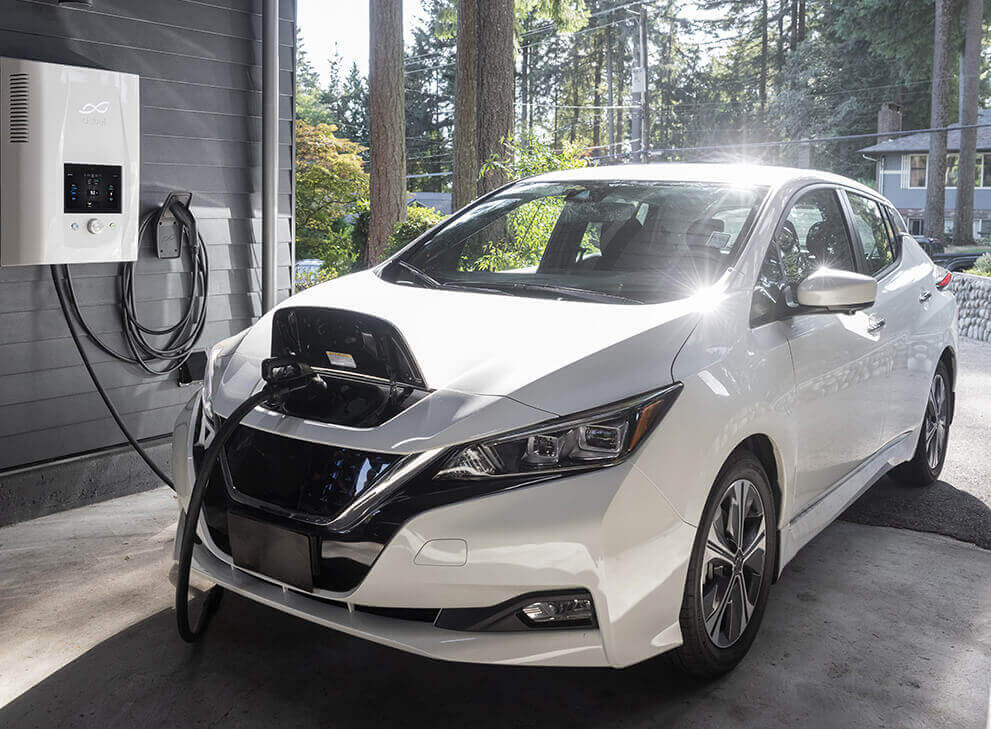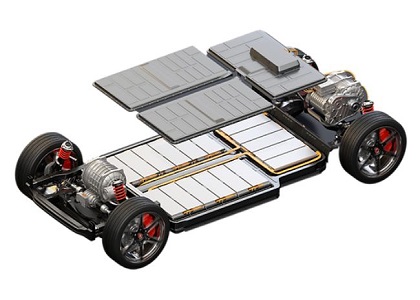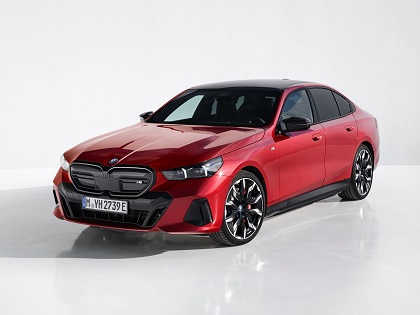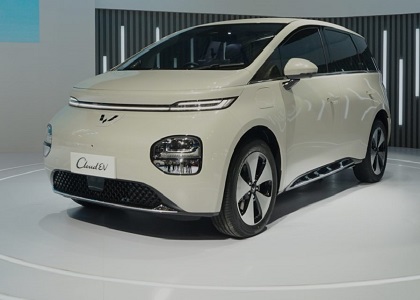
Cracking the Battery Code: Inside the Working and Components of Lithium-Ion Cells in EVs
A guide to demystify lithium-ion cells’ components and working in an EV’s battery pack. Understanding the science behind advantages and limitations of a chemistry can aid to make informed buying decisions and address questions pertaining to range, and longevity of the battery pack.
Lithium-ion cells are ubiquitously powering our smartphones, tablets, shavers, and even electric vehicles. Lithium-ion cells are ideal for use in electric vehicles due to their high specific energy and specifc power density, high operating voltages, minimal self-discharge rate, extended cycle life, and overall stability. As you may know from guide to understanding the working of EVs, the battery pack of an electric vehicle is a collection of lithium-ion cells. These cells are assembled into modules, and the collection of these modules forms the EV’s battery pack which essentially is the fuel tank of an EV that stores electricity to power the motor and propel the car forward. These cells come in various chemistries, and types/form factors, and each chemistry, mainly LFP, NMC, and NCA, of these cells dictate an electric vehicle’s range, performance, longevity, safety, environmental impact, ease of manufacturing, and cost. Furthermore it can be an important factor to determine the right choice as it can address woes pertaining to range, longevity, battery pack replacement, or concerned with ethical sourcing of critical raw materials of these cells. This article serves as a comprehensive guide, addressing queries related to EV cells and shedding light on nuanced aspects, covering components, functionalities, chemistries, and cell types, providing readers with a holistic understanding of an electric vehicle’s battery pack.
Cells and batteries are often used interchangeably, however there is a crucial difference. A cell is single unit, while a battery is a collection of two or more cells connected either in series for voltage addition or parallel for capacity addition. A cell has four main components: the anode, the cathode, the electrolyte, and the separator. The anode is the negative end of the cell which is usually made up of graphite. The cathode is the positive end of the cell which uses a metal oxide such as lithium iron phosphate (LFP) or nickel manganese cobalt oxide (NMC). Yes, you guessed it correct the cathode material usually determines the names of different lithium-ion chemistries which will be discussed later. The electrolyte is a liquid, namely lithium hexafluoride, which facilitates the flow of lithium-ions within the cell. Lastly, the separator, as the name suggests, separates the anode and the cathode from coming directly into contact with one another that could result in a short-circuit and thermal runaway (fire). The separator is usually made up of polypropylene or polyethylene. The separator is usually porous which permits the flow of lithium-ions within the cell.
Before delving into the working of a cell, it is important to understand certain terminology, mainly current, voltage, and ions that will help to comprehend the working of a cell. Current is mainly the flow of charged particles, mainly electrons that are negatively charged. Current is usually measured in amperes, A. Voltage denotes the amount of force required per unit charge to move the charged particles from one point to another, measured in volts, V. Ions are atoms that usually have a net charge depending on the atom losing or gaining electrons.
Understanding the units used to measure battery pack capacity is also essential for evaluating the performance of electric vehicles. Battery pack capacity is often measured in kilowatt-hours (kWh), which is a unit of energy equivalent to one kilowatt of power sustained for one hour. This unit is commonly used to express the energy storage capacity of electric vehicle battery packs. For instance, a battery pack with a capacity of 50 kWh can supply 50 kilowatts of power for one hour, or 25 kilowatts for two hours, assuming a constant power draw.
When charging the battery pack, the lithium-ions travel from the cathode, the positive end, to the anode, negative-end, within the cell where the lithium-ions and electrons intercalate within the layers of the graphite. During discharge, or when energy is drawn from the battery pack, the lithium-ions travel back from the anode to the cathode. Meanwhile the electrons travel from the anode to the cathode via an external circuit. Irrespective of the chemistry of the cell, the working of the cell remains largely the same.
Lithium-ion cells come in as many as six different chemistries mainly LFP (Lithium Iron Phosphate), NMC (Lithium Nickel Manganese Cobalt Oxide) or NCM, LMO (Lithium Manganese Oxide), LCO (Lithium Cobalt Oxide), NCA (Lithium Nickel Cobalt Aluminum Oxide), and LTO (Lithium Titanate Oxide). However the LFP, and NMC chemistries are the most widely used chemistries in electric vehicles. As aforementioned, these two chemistries differ in the use of the cathode material. NMC cells use lithium nickel manganese cobalt oxide as their cathode, while LFP cells use lithium iron phosphate as their cathode material. NMC cells come in various compositions which use the active materials mainly nickel, manganese, and cobalt in various mixes such as NMC 532, NMC 622, and NMC 811. The three letters denote the active materials, and the three numbers denote the composition of active materials. For instance, NMC532 cells have 5 parts Nickel, 3 parts manganese, and 2 parts cobalt. Similarly, NMC 622 cells have 6 parts nickel, 2 parts manganese, and 2 parts cobalt.
Nickel is the ingredient that lends NMC cells higher energy density; however Nickel offers poor structural and thermal stability and manganese is used to offer structural stability. While manganese contributes to structural stability, its inclusion may attenuate electrochemical activity during cell operation, necessitating the addition of cobalt to enhance electrical conductivity. On the other hand, cobalt increases both electrical conductivity and makes NMC cells more structurally stable. Due to questions pertaining to ethical sourcing of cobalt, there has been an increased effort to reduce dependence of cobalt in battery packs. The combination of these critical metals lends NMC cells some unique advantages and limitations.
NMC cells have high energy density and specific power density compared to LFP cells. Energy density is the amount of energy a cell can store in proportion to its weight, measured in watt hours per kilogram (Wh/kg), and power specific density is the rate at which the stored energy can be delivered per kilogram measured in watts per kilogram (W/kg). A high energy density enables cells to store more energy and enhances the range of an electric vehicle requiring fewer charging stops, simultaneously a higher specific power density enables an EV to deliver energy rapidly which enhances the performance of electric vehicles and achieve faster charging times as it can accept charge quickly. Ever wondered why the Porsche Taycan does the 0-100kmph sprint in a claimed 2.8 seconds. On the other hand, some limitations of NMC cells are the lower thermal stability, lower cycle life, and cost due to use of critical materials. One charge cycle consists of charging the battery pack and discharging or using the stored energy. Cycle life is the amount of charge cycles a battery pack can deliver before reaching 80% of its initial capacity, which is when the battery is replaced. NMC cells normally have a cycle life of roughly 1000-2000 cycles. Due to the high costs associated with NMC cells, they are usually found in high performance, long range EVs such as the Lucid Air, Mercedes-Benz EQS, and BMW i7.
A closely related chemistry to NMC is NCA, lithium nickel cobalt aluminum oxide. It is a chemistry that is used in the Tesla Model S and Model X. These cells have a higher energy density compared to NMC chemistry. However, they suffer from lower thermal stability and lower cycle life due to rich nickel content. A nickel-rich cell has 80% or more nickel content. Similar to NMC cells, NCA cells exhibit variations in composition, including but not limited to NCA 80, NCA 88, and NCA 95, where the two digits approximately represent nickel content. For example, NCA 80 signifies a composition of 79.4% nickel, 16.4% cobalt, and 4% aluminum. The use of aluminum enhances the safety and thermal stability of NCA cells. The exact composition employed in a Tesla is difficult to confirm; however, it is speculated to be 84% nickel, 12% cobalt, and 4% aluminum.
Since LFP cells do not have active materials mainly nickel, cobalt, and manganese it offers some unique advantages. LFP cells are thermally more stable compared to NMC cells. While NMC and NCA cells experience thermal runaway at temperatures of 410°F (210°C) and 302°F (150°C) respectively, LFP cells experience the same phenomenon at at 518°F (270°C) making them suitable for warmer climates. It has a longer cycle life compared to NMC usually more than 3000 cycles depending on how the battery pack is maintained. Lastly, they are cheaper due to absence of nickel, and cobalt which make them cost effective for use in low cost EVs such as the Tata Nexon.ev, BYD Dolphin, Tata Punch.ev, and MG ZS EV. Despite some advantages, LFP chemistry suffers from lower specific energy and power density compared to NMC cells resulting in lower range and milder performance compared to NMC cells.
One may conclude that LFP cells are better because they are thermally more stable and have a longer cycle life. However it depends on the application and use case of the product. For high-performance, long-range vehicles, NMC cells are suited because of higher energy and specific power density enabling them to travel longer distances between charges, deliver and accept energy at a faster rate for strong performance, and faster charging. Since NMC cells are more expensive due to heavy metals mainly nickel and cobalt, they may not be the suitable chemistry for mass market EVs which is where LFP chemistry shines. Since LFP cells are inherently cheaper, they can be used in mass market electric vehicles, or standard range versions such as the Tesla Model 3. In brief, it depends on the application and the use cases of the product which will vary with every individual.
Apart from different chemistries, cells come in as many as three types or form factors mainly cylindrical, prismatic, and pouch. Cylindrical cells, as the name suggests, are cylindrical in shape similar to cells that power our TV remotes, however with different dimensions. The anode, cathode, and separator are rolled and encased into cylindrical casing. These cells come in standard sizes mainly 18650, 2170, and 4680 where the first two and last two digits denote the diameter and height of the cell respectively. Tesla Model S, Lucid Air, and Rivian R1S are prime examples of using cylindrical cells. Prismatic cells are rectangular or cuboidal in shape and are usually bigger than cylindrical cells. The cathode, anode, and separator are rolled into an eliptical shape encased by rectangular casing. These cells offer better packaging density compared to cylindrical cells; however they can be more expensive to manufacture compared to a cylindrical cell. Prime examples of EVs which use prismatic cells are BYD, Tata Motors, and BMW. The last form factor is the pouch cell which are thin and rectangular in shape with positive and negative terminals side-by-side. They share the advantage of packing efficiency with prismatic cells; however these cells are prone to swell to 6-8% of their thickness which needs to be accounted when assembling these cells into modules. Prime examples of EVs with pouch cells are Hyundai Ioniq 5, Kia EV6, and GMC Hummer EV. The advantages and limitations of each cell warrant a separate article to elaborate them in more detail as the anode, cathode, and separator are rolled differently for each cell type, stay tuned.
Image Sources
For any inquiries or suggestions regarding the content, please feel free to reach out to us at jash@evlane.net






February 06, 2024
Category: